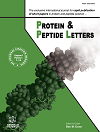-
s Self-assembly of Functional Nanostructures by Short Helical Peptide Building Blocks
- Source: Protein and Peptide Letters, Volume 26, Issue 2, Feb 2019, p. 88 - 97
-
- 01 Feb 2019
Abstract
The self-assembly of short peptide building blocks into well-ordered nanostructures is a key direction in bionanotechnology. The formation of β -sheet organizations by short peptides is well explored, leading to the development of a wide range of functional assemblies. Likewise, many natural proteinaceous materials, such as silk and amyloid fibrils, are based on β-sheet structures. In contrast, collagen, the most abundant protein in mammals, is based on helical arrangement. Similar to β-sheet structures, short helical peptides have been recently discovered to possess a diverse set of functionalities with the potential to fabricate artificial self-assembling materials. Here, we outline the functional roles of self-assembled nanostructures formed by short helical peptides and their potential as artificial materials. We focus on the association between self-assembled mesoscale structures and their material function and demonstrate the way by which this class of building blocks bears the potential for diverse applications, such as the future fabrication of smart devices.


